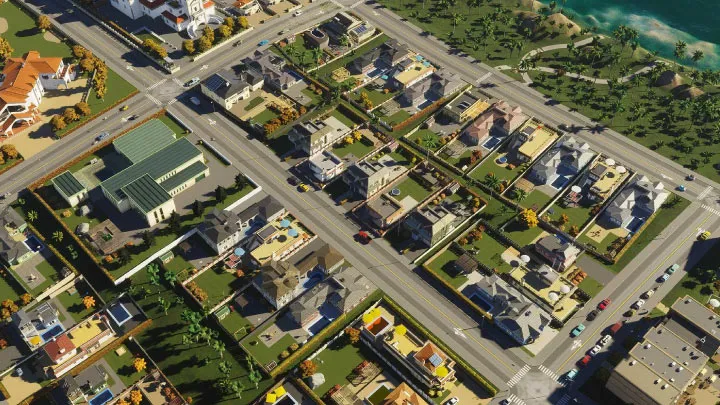Introduction
"Cities: Skylines," developed by Colossal Order and published by Paradox Interactive, is a highly acclaimed city-building simulation game that allows players to create, manage, and develop their own cities from scratch. Since its release in 2015, the game has gained a dedicated following due to its engaging gameplay, deep mechanics, and creative possibilities. Whether you’re constructing sprawling metropolises or quaint towns, understanding the intricate systems at play is vital for urban planning success. This comprehensive guide provides essential tips and strategies to help you build a thriving city and navigate the complexities of "Cities: Skylines."
Getting Started with Your First City
Understanding the Basics
Before diving deep into city planning, it’s crucial to understand the fundamental mechanics of "Cities: Skylines." Familiarizing yourself with these basics will set the stage for a successful gameplay experience.
Key Game Mechanics
- Zoning: Your city is divided into different zones—residential, commercial, and industrial. Proper zoning is essential for balanced city growth.
- Road Systems: Constructing an efficient road system is critical. The flow of traffic affects your city’s economy and residents' happiness.
Choosing Your Map
Choosing the right map is the first major decision you’ll make. Each map has unique features, resources, and challenges that can influence your gameplay.
Map Features to Consider
- Terrain: Look for maps with buildable land, water sources, and resources such as oil or forests.
- Accessibility: Consider proximity to highways and railroads to ensure easy transportation options for your residents and industry.
Zoning Strategies
Effective Zoning Practices
Zoning is one of the most vital aspects of city planning. Each type of zone serves specific purposes, and understanding how to balance them will lead to a successful city layout.
Types of Zoning
- Residential Zones: Areas where citizens live. High-density zones can house more people but may require more services.
- Commercial Zones: Shops and businesses that provide jobs and services to residents. Place these zones near residential areas for convenience.
- Industrial Zones: Factories and production facilities. They require transportation routes for efficient material delivery and exports.
Balancing Zoning Needs
To keep your city thriving, balancing zoning types is essential. Too much of one type can lead to issues like job shortages or overpopulation.
Zoning Tips
- Buffer Zones: Place commercial zones between residential and industrial zones to minimize pollution impact on residents.
- Diverse Areas: Create mixed-use developments where residential and commercial zones coexist. This promotes walkability and reduces traffic.
Infrastructure and Transportation
Building Effective Infrastructure
Infrastructure is the backbone of your city. Well-planned infrastructure not only improves traffic flow but also enhances the overall quality of life for your citizens.
Road Design Essentials
- Straight Roads: Constructing straight roads minimizes traffic congestion and improves flow.
- Intersections: Use roundabouts where possible to reduce traffic jams at intersections.
Public Transportation Systems
Implementing public transport options can help reduce traffic and improve residents’ happiness.
Transportation Options
- Buses: Affordable and flexible, buses can cover large areas and connect different zones.
- Subways: An excellent option for densely populated areas, subways can transport many people without taking up surface space.
- Trams: These can help mayoral districts and are a great way to enhance urban areas.
Managing Utilities
Essential Utility Services
To keep your city running smoothly, you must provide basic utility services like water, electricity, and waste management.
Water and Electricity
- Water Supply: Ensure you place water pumping stations at higher elevations to optimize water pressure. Monitor demand and expand as your city grows.
- Power Supply: Use a mix of renewable and non-renewable energy sources. Wind turbines and solar power are great eco-friendly options but ensure you have backups like coal or oil plants.
Waste Management
Proper waste disposal is crucial for maintaining your city’s health. Without it, you risk ruining the quality of living for your citizens.
Waste Management Tips
- Landfills and Incinerators: Initially, use landfills for inexpensive waste management, but transition to incinerators or recycling centers as your city grows to reduce pollution.
- Monitor Pollution: Keep an eye on land and air pollution; poor management can lead to health issues and citizen discontent.
Economic Management
Balancing the Budget
Managing your city's economy is a critical aspect of urban planning. A solid foundation allows you to invest in development and services for your citizens.
Revenue Sources
- Taxes: Adjust tax rates for residential, commercial, and industrial zones to ensure revenue while maintaining citizen happiness. Lower taxes can attract more residents but reduce income.
- Loans: Use loans wisely to invest in infrastructure. However, be cautious with debt management.
Funding Projects Wisely
Investing in infrastructure and services adds value to your city but can strain your budget.
Smart Investment Tips
- Prioritize Development: Focus on high-demand areas first, such as schools, hospitals, and public transport.
- Observe Return on Investment: Monitor the returns from your projects to avoid financial losses.
Handling Disasters and Challenges
Preparing for Natural Disasters
In "Cities: Skylines," disasters like floods, fires, and earthquakes can disrupt your carefully crafted plans. Being prepared is essential.
Disaster Management Strategies
- Emergency Services: Invest in fire departments, police stations, and hospitals to ensure the safety and security of your citizens.
- An Emergency Plan: Use disaster response services and establish evacuation routes to minimize chaos during emergencies.
Addressing Challenges
Managing issues such as traffic congestion, pollution, and citizen dissatisfaction is vital for the long-term success of your city.
Problem-Solving Tips
- Analyze Traffic Patterns: Use traffic flow tools to identify congestion points and rework roads or add transportation options.
- Engage with Citizens: Listen to citizen feedback via the complaints panel and address issues to maintain happiness and desirability in your city.
Expanding Your City
Growth Strategies
As your city develops, expanding thoughtfully is essential. Planning for expansion helps accommodate growing populations and reduces strain on existing infrastructure.
Expansion Techniques
- Gradual Growth: Don’t rush into expanding your city; ensure your current infrastructure can handle new residents.
- Balanced Zoning: When adding new areas, maintain a balanced approach to zoning to prevent problems from arising.
Upgrading Infrastructure
As your city grows, infrastructure must be upgraded to meet new demands. Proactively upgrading will prevent future issues.
Upgrade Tips
- Improve Transport Routes: As the city expands, consider investing in major arterial roads and public transportation upgrades to maintain accessibility.
- Maintain Utilities: Regularly check the efficiency of your water and power systems. Upgrade as needed to prevent shortages.
Enhancing Aesthetics and Entertainment
Focusing on City Aesthetics
Creating a visually appealing city enhances the quality of life for your Sims and increases land value.
Aesthetic Tips
- Parks and Green Spaces: Incorporate parks, plazas, and recreational areas throughout your city. They promote happiness and attractiveness.
- Unique Buildings: Create focal points with landmarks, unique buildings, or attractions to draw tourists and add character.
Introducing Entertainment Options
Adding services and attractions can keep residents entertained and satisfied, improving their overall happiness.
Entertainment Solutions
- Sports Facilities: Hosting sporting events attracts residents and boosts community morale.
- Cultural Attractions: Museums, theaters, and concert halls enhance the cultural landscape, encouraging happiness and tourism.
Engaging with the Community
Sharing Your Experiences
The "Cities: Skylines" community is diverse and engaged. Connecting with other players can enhance your experience and provide valuable resources.
Community Interaction Channels
- Forums and Social Media: Engage in discussions on platforms like Reddit and Discord to share strategies and ask for tips.
- YouTube and Twitch: Watch gameplay videos or streams to learn from others’ experiences and gather inspiration for your city.
Collaborating with Other Players
Consider joining collaborative projects with fellow players. Collaborations can introduce new ideas and diverse perspectives.
Collaborative Tips
- Join Community Challenges: Participate in city-building challenges and contests to test your skills against others in the community.
- Share Blueprints: Exchange city layouts and designs to enhance creativity and resource management.
Using DLCs and Expansions
Exploring DLC Content
Numerous downloadable content (DLC) packs expand the gameplay experience in "Cities: Skylines," introducing new features and mechanics.
Popular DLCs to Consider
- Cities: Skylines – Snowfall: Introduces winter weather mechanics, public transport options, and functional winter sports facilities.
- Cities: Skylines – Industries: Focuses on building and managing industrial districts, adding depth to the economy and expansion opportunities.
Integrating DLC Insights
Incorporating features from DLC packs can significantly enrich your gameplay and city-building experience.
DLC Integration Tips
- Adapt to New Mechanics: Learn how new features from DLC packs can be incorporated into your existing city design.
- Use New Assets: Take advantage of new buildings and structures introduced in the DLC for a unique city layout.
Conclusion
"Cities: Skylines" provides a rich and engaging simulation experience that allows players to express their creativity and strategic thinking. By mastering the mechanics, effectively managing resources, and focusing on aesthetics and community engagement, you can build a thriving city that flourishes over time. This guide serves as a comprehensive resource for existing players and newcomers alike, highlighting essential tips and strategies to enhance your journey through the beautiful realms of urban planning. Gather your resources, create your vision, and bring your city to life!



















